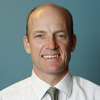 The below questions are answered by Dr. Richard M. Kline, Jr., of The Center for Natural Breast Reconstruction.
The below questions are answered by Dr. Richard M. Kline, Jr., of The Center for Natural Breast Reconstruction.
1. I had my second part to breast reconstruction and had necrosis removed, but I still have the hardness. How can it be treated? They did liposuction.
If necrosis was removed and there is still hardness, then it is most likely from either 1) additional / remaining fat necrosis, or 2) edema (can feel hard, especially likely in radiated tissue). In either case, resolution is likely without additional surgery, if you wait long enough (may take 1 – 2 years), although breasts will be smaller in either case. If pain is present, and fat necrosis is still present, then surgery to remove the rest of the dead fat may be indicated.
2. I am considering silicone implants for breast reconstruction. What should I know before I proceed—what questions should I ask?
Silicone or saline implants, while generally very safe from a medical perspective, are still subject to some complications. The most common problem is that either type implant can develop a hard capsule of scar tissue around it (capsular contracture), which is sometimes painful, and makes the breast mound hard (and often unattractive). Generally speaking, the thicker and more normal the soft tissue covering around them, the better result implants tend to give when used for reconstruction. The presence of radiation injury greatly decreases the chances of success when using either silicone or saline implants for breast reconstruction, and flaps may be a better alternative in that case.






